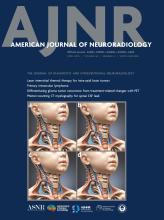Jump to comment:
- Page navigation anchor for Response to LetterResponse to Letter
We thank Savoldi Laura Maria Borges and colleagues for their comments on our study on the fetal MRI findings, etiology and outcomes in schizencephaly (George et al, 2025).
Show More
We read with interest the authors’ preclinical work on neonatal mice subject to a transcranial freeze lesion where hydrocortisone treatment was associated with replacement of schizencephaly with “microgyria” (Savoldi et al, 2025). Our study results support intrauterine injury/hemorrhage as the cause of majority of cases of schizencephaly (George et al, 2025). We agree our results likely underestimate the proportion of subjects with prior vascular injury as evidence of prior ischemia or hemorrhage can be hard to detect on fetal and even neonatal MRI. Prompt identification of fetal hemorrhage would be optimal, and current imaging is more sensitive and specific for the detection of fetal intracranial hemorrhage in its early stages. However, due to the lack of detectable clinical symptoms in fetuses, these injuries, when detected prenatally, are often identified incidentally on prenatal US. Furthermore, other than the timing of injury in relation to neuronal migration, it is unclear why some insults result in porencephalic cysts while others result in a spectrum of cortical malformations.
In our study on fetal schizencephaly, 4/7 subjects with postnatal follow-up (median age of 4 years at follow-up) had epilepsy. Epilepsy was not associated with open vs. closed cleft or cleft size on fetal MRI. D...Competing Interests: None declared. - Page navigation anchor for Finding intracerebral hemorrhages on fetal MRI may provide an opportunity to treat and attenuate the severity of schizencephalyFinding intracerebral hemorrhages on fetal MRI may provide an opportunity to treat and attenuate the severity of schizencephaly
We read with great interest the article published by George et al. (George et al., 2025), which retrospectively investigated a cohort of 22 patients prenatally diagnosed with schizencephaly by magnetic resonance imaging between 1996 and 2022. The authors interpreted 64% of the cases as secondary to lesions of vascular, infectious, placental or genetic origin, with intracerebral hemorrhage identified in half of the patients. Interestingly, genetic causes were found in only two cases, leaving six patients without an apparent reason for the development of the malformation. Considering that intracranial hemorrhages can be difficult to detect after the resolution of the hemorrhagic episode, it is possible that some cases of schizencephaly without an identified cause are also secondary to lesions. As typically occurs in schizencephaly, the neurological outcomes observed were catastrophic, with epilepsy being the most common, along with cerebral palsy, speech difficulties and intellectual decline.
Our research group has been dedicated to understanding the pathophysiological events that lead to the development of schizencephaly in a murine model, identifying key stages that could become therapeutic targets. We recently demonstrated that hemorrhage, neuroinflammation, hypoxia, and oxidative stress are present as early as 3–4 hours after injury, preceding the development of the malformation, when induced by transcranial freezing injury in neonatal mice (Savoldi et al., 2025;...
Show MoreCompeting Interests: None declared.












